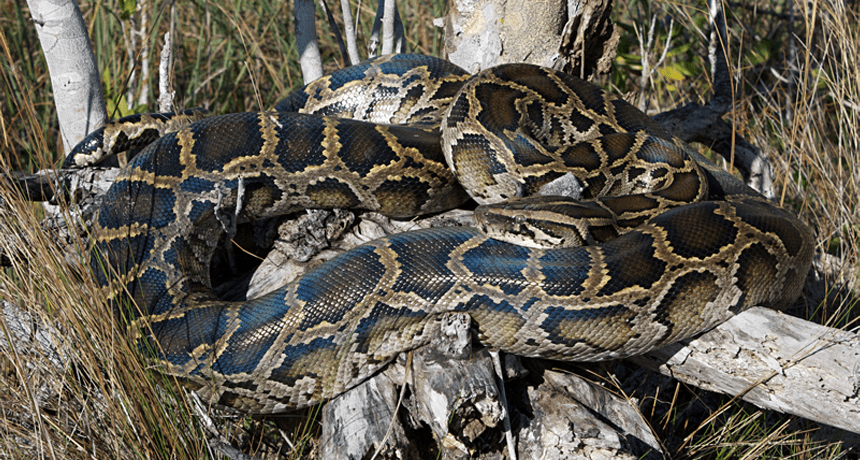Even fast-breeding rabbits can’t withstand Everglades python invasion
Fecund little mammals can’t keep up with voracious reptiles

HOSTILE TAKEOVER Burmese pythons invading the Everglades turn into such active hunters when the weather warms up that they can overwhelm even fast-breeding populations of small mammals.
Todd Pierson/Flickr (CC BY-NC-SA 2.0)